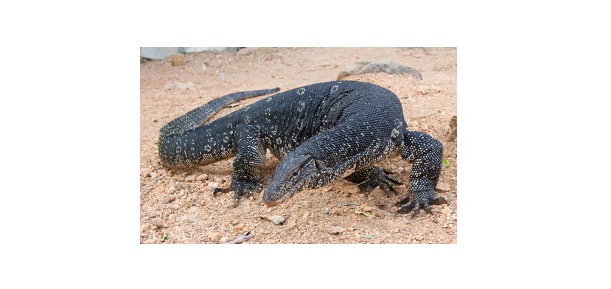Table of Contents
Proboscis Monkey Definition
Proboscis Monkey belong to the genus Nasalis and order Primates. These endangered primates have a lifespan of 20 years.
What is Proboscis Monkey?
Proboscis Monkey is a endangered primate is an endemic species belonging to the island of Borneo. They were named for their distinct hanging long nose observed in males. They are arboreal species that prefer the trees near jungle streams or mangrove forests. Locally they are called bekantan and also named a long-nosed monkeys.
Increasing deforestation in tropical rainforests have caused their species to decline and they are now listed in the IUCN Red List under the category Endangered. Due to the threat of deforestation in its tropical rainforest habitat, populations of the species are in decline and it is listed as Endangered on the IUCN Red List.
Proboscis Monkey Feature
The males of probosci monkeys are larger and weigh about 22.5 kg, which is twice the size of females. They have light brown fur with some tones of red near the head and shoulders and grey tones on their arms and legs. Females measure up to 52-64 cm in length, while males have a length of 76 cm.
The most characteristic feature of the males is bulbous hanging long noses that can measure up to 10 cm in some. These distinct noses are absent in females who have triangular smaller noses. They have webbed fingers and toes that are useful when swimming.
Proboscis Monkey Habitat
In the jungles of Borneo, they are found near swamps, mangroves and rivers. They avoid their predators with their arboreal lifestyle. They move to the ground when they need to find food. Like other primates, they have a social hierarchical complicated structure. Males head the group or harem that comprise 2-7 females and their offspring.
They join other groups for safety at night. Some will remain solitary while others form all-male groups. One male head the group for 6-8 years after that other male takes over with aggression or force. These one-male groups may comprise up to 20 individuals at a time.
Proboscis Monkey Diet and Predators
They are usually omnivores, that usually feed on leaves, seeds, leaves and forage for fruits from the ground or trees. They can also feed on insects occasionally. Exotic animals like pythons, jaguars, and crocodiles prey on them. They have also been hunted by indigenous people as they are considered delicacies.
Proboscis Monkey Reproduction
Males make mating calls employing their long noses to amplify it. This intimidates other males while impressing females. The females will make pouting long faces to solicit a male. The copulation lasts for 1 min, and the gestation period is of about 170-200 days, females usually give birth under the safety of a large band and at night.
They give birth to one young one at a time and nurse them for a period of 7 months. They start eating solid food at approximately 6 weeks. They have a life span of 20 years. Females attain sexual maturity at 5 years of age.
Proboscis Monkey Conservation Status
The place that it is endemic to is also one of the most threatened regions in the world. The deforestation of tropical rainforests in Borneo has led to habitat displacement of various species like the Proboscis monkey. The island is not just unique but it is also shared by 3 countries: Brunei, Malaysia and Indonesia.
The fragmentation of their habitat has caused alterations in their behaviour due to which they are prone to take more risks in search of food. This makes them susceptible to predators increasing their mortality as a result their population is declining and it has been labelled as Endangered.
Fun Facts About Proboscis Monkey!
They are not usually representing the symbols of conservation as other endangered species. But these fascinating creatures are declining at an alarming rate due to habitat destruction. They show various interesting behaviours that make them unique primates.
i. Proboscis Monkey: The Swimming Monkey
They are usually found near a water source like rivers or swampy areas, where they spent their entire life. They often jump into the water from trees and bellyflop comically. They have a fascination and affinity for water.
They have webbed hands and feet that help to swim rapidly and evade their predators like the crocodile. They can swim to deep waters at 20 m underwater and can cross large rivers. They can swim efficiently and comprise the most adapted species of primates in waters.
ii. Proboscis Monkey Talk
Communications are essential to maintain social structures in the probosci monkey. Communications occur with the help of different calls, some of which have been termed as honks.
The threatening calls are meant to alert the other organisms of the species of a possible threat. These calls are made with their fleshy large nose that also amplifies the calls. They also engage in other non-verbal forms of communication like shaking branches, gestures and baring their teeth.
iii. The Probiotic Proboscis Monkey
These monkeys rely on gut bacteria in their chambered stomach to catabolize food materials that are hard to break down like the cellulose of plants. This facilitates the mechanical breakdown that occurs when they chew their cud. This process aids in releasing more nutritional content from the food digested.
Proboscis Monkey Citations
- Vocal acoustics in the endangered proboscis monkey (Nasalis larvatus). Am J Primatol . 2014 Feb;76(2):192-201.
- Fecal parasite risk in the endangered proboscis monkey is higher in an anthropogenically managed forest environment compared to a riparian rain forest in Sabah, Borneo. PLoS One . 2018 Apr 9;13(4):e0195584.
- Population Genetics Analyses of the Endangered Proboscis Monkey from Malaysian Borneo. Folia Primatol (Basel) . 2019;90(3):139-152.







